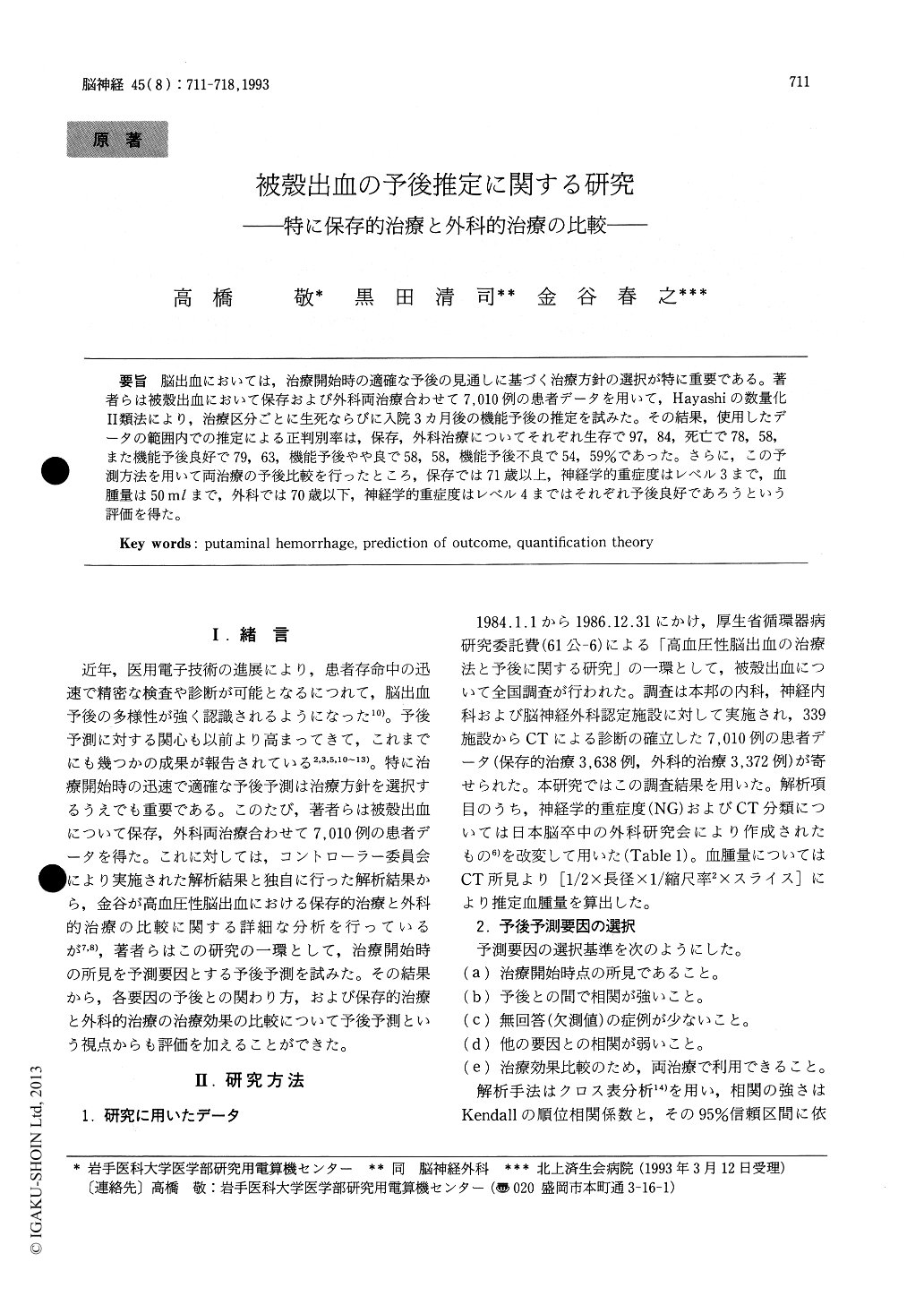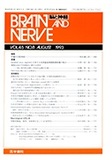Japanese
English
- 有料閲覧
- Abstract 文献概要
- 1ページ目 Look Inside
脳出血においては,治療開始時の適確な予後の見通しに基づく治療方針の選択が特に重要である。著者らは被殼出血において保存および外科両治療合わせて7,010例の患者データを用いて,Hayashiの数量化II類法により,治療区分ごとに生死ならびに入院3カ月後の機能予後の推定を試みた。その結果,使用したデータの範囲内での推定による正判別率は,保存,外科治療についてそれぞれ生存で97,84,死亡で78,58,また機能予後良好で79,63,機能予後やや良で58,58,機能予後不良で54,59%であった。さらに,この予測方法を用いて両治療の予後比較を行ったところ,保存では71歳以上,神経学的重症度はレベル3まで,血腫量は50 mlまで,外科では70歳以下,神経学的重症度はレベル4まではそれぞれ予後良好であろうという評価を得た。
We obtained information on patients with putaminal hemorrhage (3,638 medically treated cases and 3,372 surgically treated cases) . With these data, we have developed easily applicable and clinically useful prediction models for both morta-lity and activities of daily living (ADL) at three months after admission. We derived these models by Hayashi's discriminant technique for categoricaldata. Before their derivation, variables generally available on the initial day of hospitalization and possibly related to outcome were examined individ-ually with tests of homogeneity. Neurological grad-ing (NG), age, deformity of cisterns around mid-brain, midline shift, hematoma volume, and motor paralysis were identified as candidate predictors of both mortality and ADL. CT classification was also added to the predictors of ADL. Initially, all these factors were included in tentative models, and then those which were found not to contribute substan-tially to the prediction were deleted. Ultimately, we proposed two models, one for mortality and the other for ADL. The mortality model used NG, hematoma volume, and deformity of cisterns around midbrain as predictors, and the ADL model used age, NG, CT classification, hematoma volume, and motor paralysis. Average correct classification rates were 87% (medical) and 69% (surgical) for mortality, and 64% (medical) and 60% (surgical) for ADL. With these models, we evaluated indica-tions of both kinds of treatment by comparing each predicted ADL of the medically treated cases with that of the surgically treated cases.

Copyright © 1993, Igaku-Shoin Ltd. All rights reserved.


